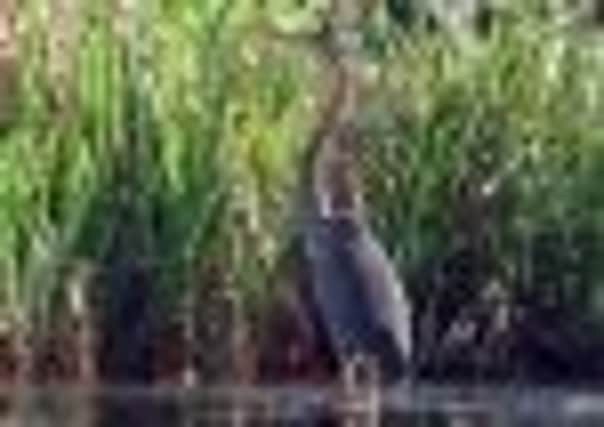High hopes as purple heron visits Yorkshire


Another called in briefly at the Triangle, at Spurn, on Monday afternoon before flying off across the Humber, and others have been seen on Anglesey and in Cornwall.
A few purple herons are seen every spring and autumn in this country and have long been tipped as a bird set to join little and cattle egrets and breed here.
Advertisement
Hide AdAdvertisement
Hide AdLast summer, a pair became the first to do so at the Dungeness reserve, in Kent when they successfully fledged two young after a round-the-clock guard on the nest by the RSPB.
Purple herons have declined across much of Europe as wetlands dry out but have become established breeders in northern France, Belgium and Holland.
The entire European population migrates to west and east Africa for the winter, and satellite transmitters have been fitted to some of the Dutch birds to follow their progress to and from Mauritania, the Gambia and Senegal a journey which some complete in just seven days.
Purple herons are closely related to our grey herons but with longer yellow bills and snake-like necks, which, in flight, are carried in a pronounced ‘S’ shape.
Advertisement
Hide AdAdvertisement
Hide AdAdults in breeding plumage are a rich blend of colours, the neck being chestnut and cream stripes broken by thin black bandings, the upper parts slate grey with a purple glossy sheen, dark underwings and cinnamon chestnut plumes.
Purple herons also differ from grey in that they nest on the ground, laying two to three eggs on mats of twigs and reeds.
Hopefully, more will follow the lead of the Dungeness pair and breed here soon.
Rare grebes in colourful breeding plumage have also been present in the region with a red-necked grebe still at 10-Acre Lake on Hatfield Moors, in South Yorkshire. This is the fifth year it has returned there but, again, there is no sign of a female for it to impress.
Advertisement
Hide AdAdvertisement
Hide AdA Slavonian grebe, in breeding plumage of golden yellow head plumes, is at Blacktoft Sands, while another, present at Swillington Ings Leeds since February 24, has also come into summer plumage.
Meanwhile, black-necked grebes, with yellow fan-shaped ear tufts, are also being seen at 10-Acre Lake and several other sites in the region.
More summer migrants have been returning, including common terns with the first back at Tophill Low 13 days earlier than the previous record, and another early arrival at Swillington Ings.
At Tophill, work had been completed on tern islands, while at Swillington, new tern rafts are about to be installed on Astley Lake.
Advertisement
Hide AdAdvertisement
Hide AdWhitethroats and both sedge and reed warblers have also been reported, redstarts and ring ousels have been seen both on the east coast and inland, while there are good numbers of white and some yellow wagtails.
Two dotterels were seen on Burbage Moors, South Yorkshire and more can be expected at traditional calling-off places for this beautiful bird as it passes through the region to the high moors where it breeds.